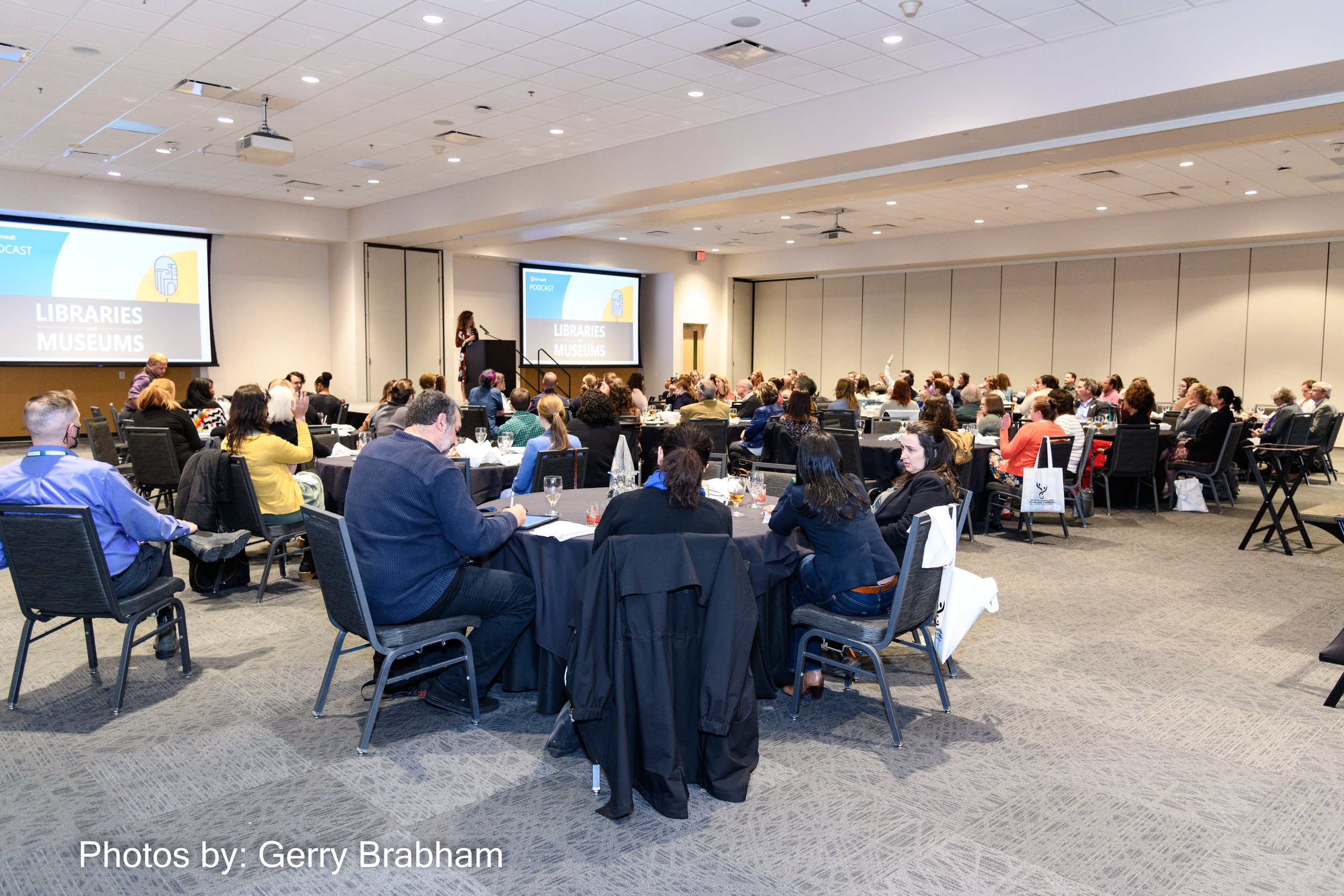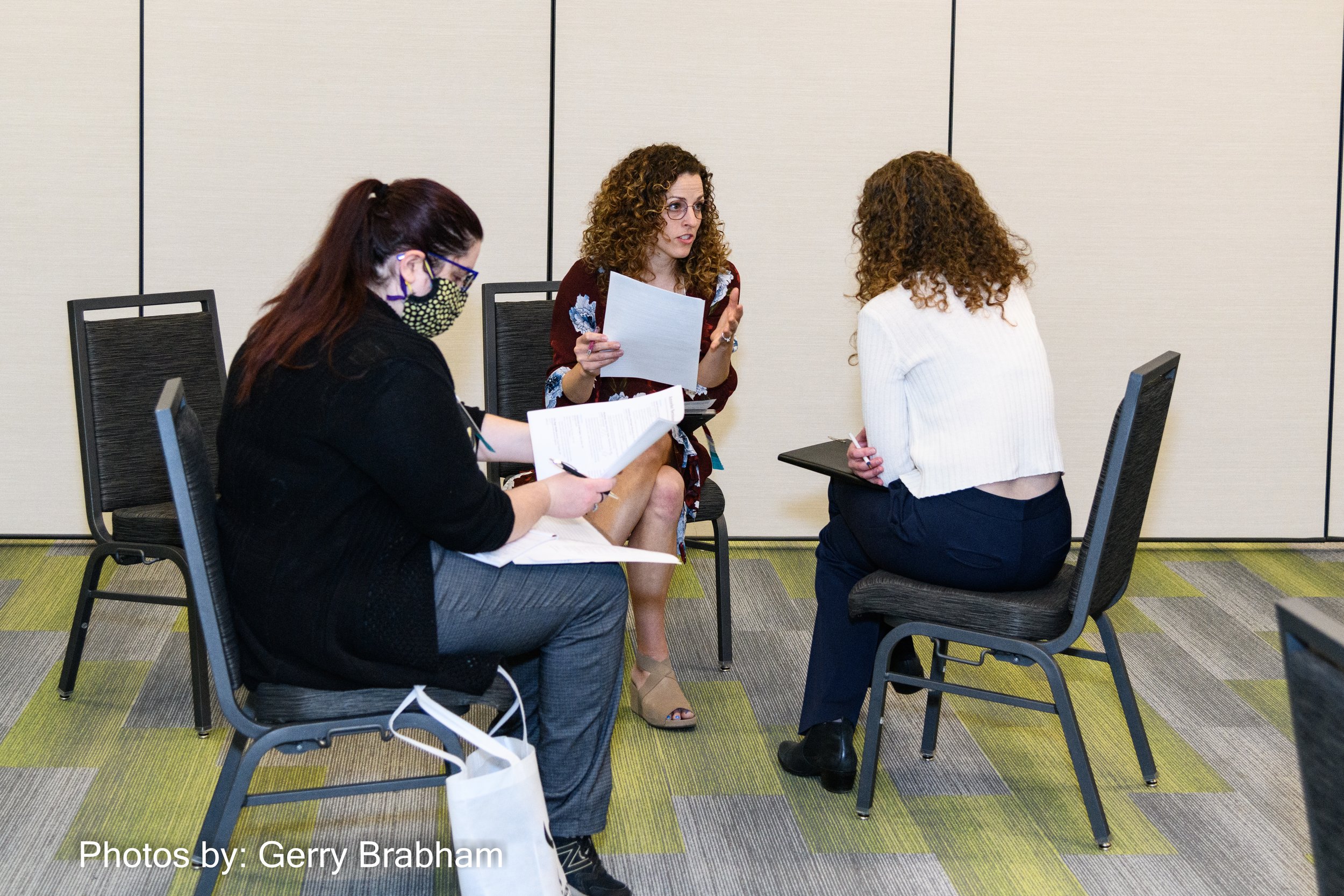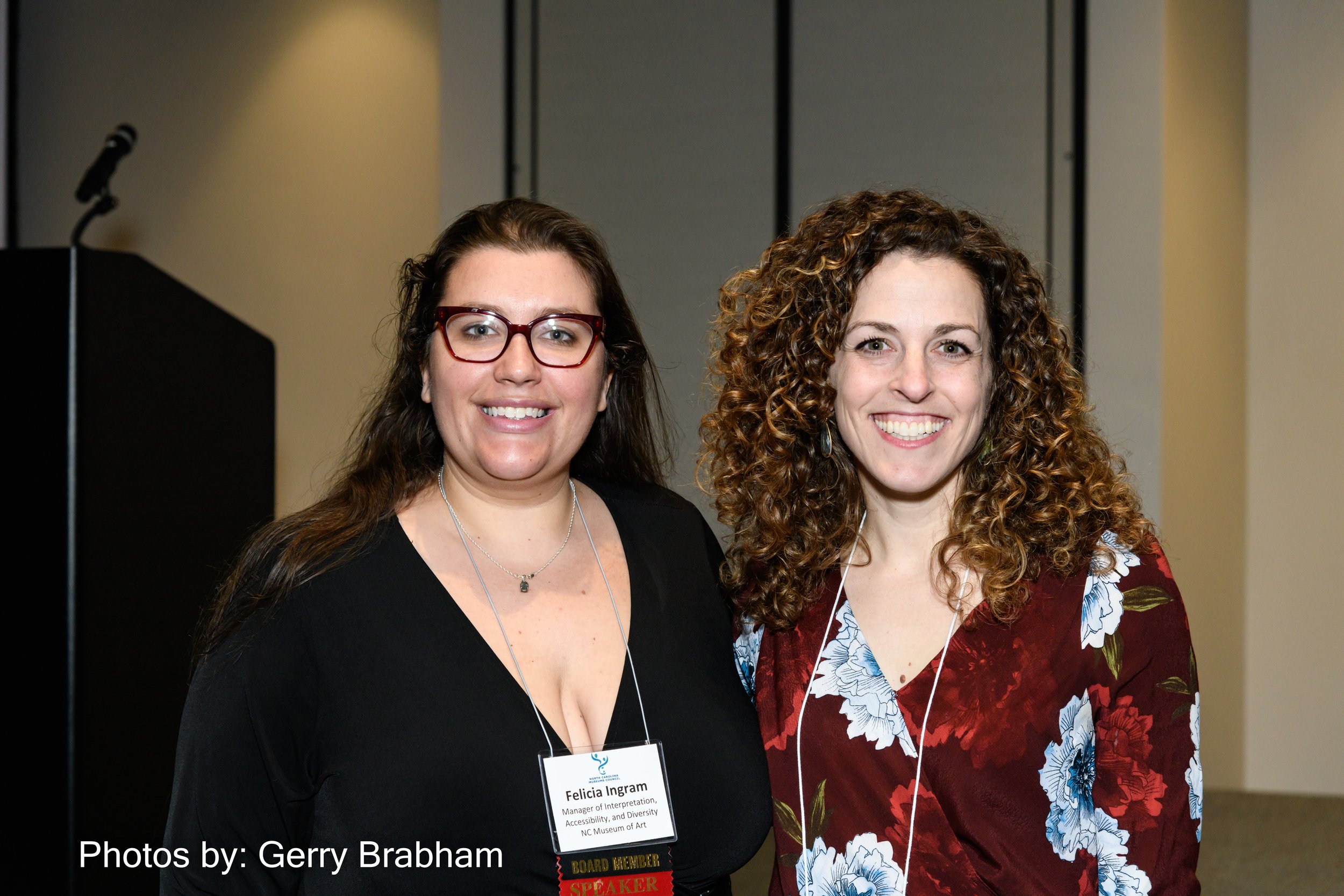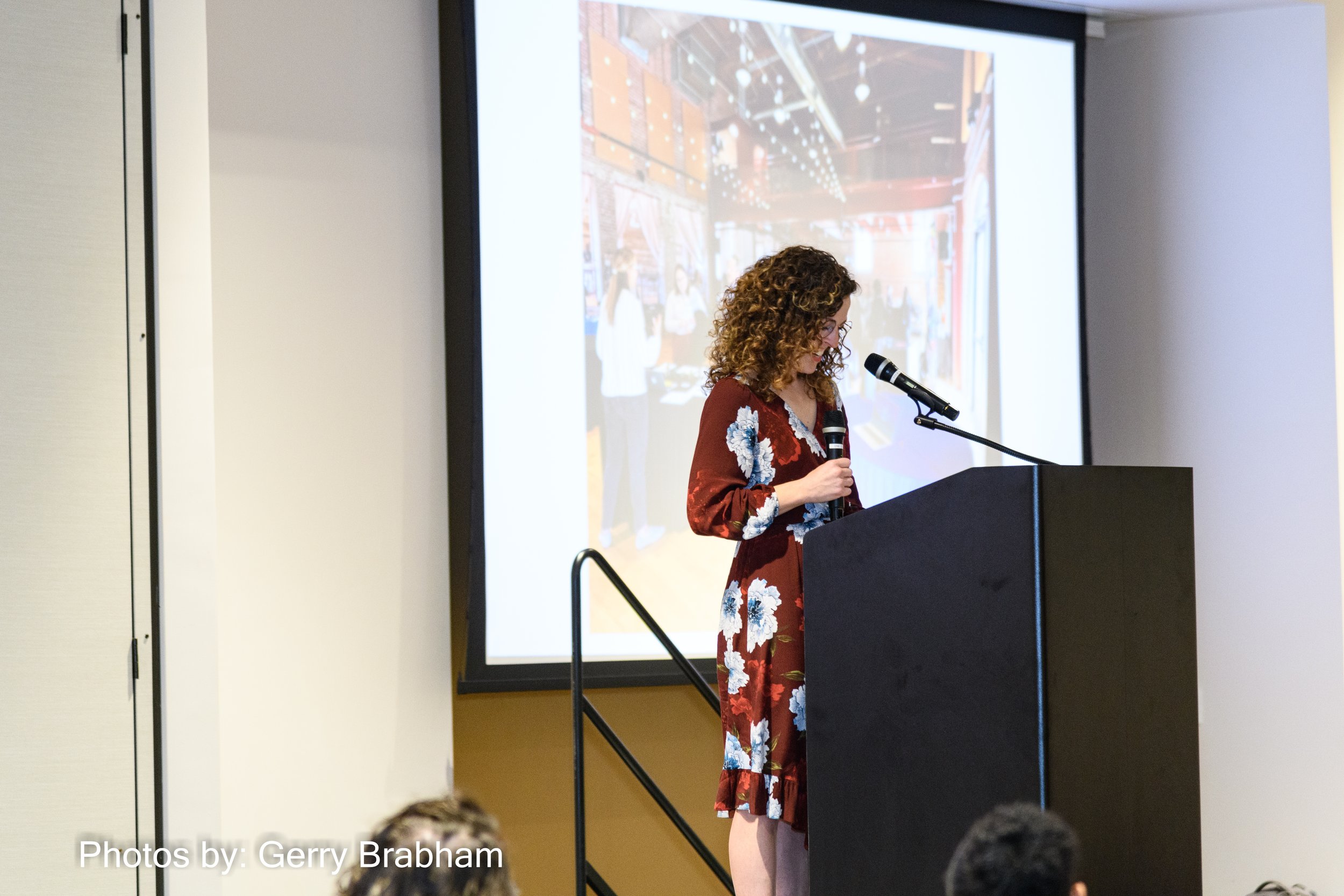Full Interview Transcript
[00:00:00] Emily Kotecki: Welcome to Museum Buzz, a podcast where we unpack trendy, buzzy words in museums, through conversation and games. I'm Emily Kotecki. . This is Season Three, the Mini Series, where we are featuring three incredible guests talking about three very important topics related to distance learning, such as online communities, social emotional learning.
And today, we're talking about accessibility with Sina Bahram. Sina is the president of Prime Access Consulting. Sina, thank you so much for being here.
[00:00:38] Sina Bahram: Thanks for having me.
[00:00:40] Emily Kotecki: I want to actually begin with the pandemic since the pandemic really expedited and shifted everything to digital. And I'm wondering how you felt when that happened. Were you feeling dread because everything was online or was it some sense of optimism? Because a lot of those digital platforms had accessibility features built in, or maybe something else entirely?
[00:01:03] Sina Bahram: Yeah. I mean, some contexts may be helpful, right? Like I happen to be blind. So I use a screen reader and various assistive technologies that, um, read digital information to me. Right. My phone talks, my computer talks, that sort of thing. And so uh, you know, the question about accessibility. Yeah. Very well put because, uh, it makes a big difference whether we're accessing things in person or virtually, um, you know, my background happens to be computer science.
And so, you know, I'm a pretty technical person. I have the advantage, really the privilege of being very familiar with things. I was doing things remotely, uh, you know, 10 years before everybody was kind of forced to. Right. So in that respect, it was a little bit of more of the same, you know, Well, all right.
Um, we've got these various things that are now happening remotely, and that's perfectly fine because it's technologies like zoom and, um, you know, slack and email and things that I'm using on a daily basis anyways.
In terms of your, your question around the accessibility of services, uh, it's an interesting dichotomy there, right? In some way, The pandemic has led to an unprecedented amount of digital literacy being proliferated around the world, really around the world. People are using zoom and video chats and things of this nature a lot more where they ordinarily wouldn't.
And this is wonderful if those services are accessible because you're then able to do things that otherwise may have been more difficult, especially for persons with discipline. But by the flip side of that, if you're forced to do those things and you happen not to be very tech savvy, or what's far more common, unfortunately, and this is at the heart of your question, those services aren't accessible because they weren't built inclusively or designed inclusively.
So how did I feel? You know, I think I was preoccupied with a lot of other aspects of the pandemic at the time.
But it has led to an incredible proliferation of doing things remotely, which again, we'd be remiss if we didn't recognize and honor the fact that persons with disabilities had been asking for. For decades beforehand and we're told this will be too expensive. This will be impossible. And March of 2020 hits and all of a sudden by April, every single conferences online.
So clearly it wasn't all that hard to actually achieve when the will was there.
[00:03:24] Emily Kotecki: You described a proliferation in digital literacy around the world. Did you see that in museums and how they approached accessibility within those digital programs?
[00:03:35] Sina Bahram: I would say, uh, through some necessity, uh, maybe a little bit for some folks, but I wouldn't say sector wide. No. And, and the reason is this, when typically done accessibility and really inclusion by extension. Reactive, right. It's oh, no. We found out our website site.
It doesn't work for population acts. Right? We should to do something about it, right? This is, this is the unfortunate and sad approach to accessibility that is often times done. So as a result, you know, pandemic hits, everything's going online. We're doing so much more stuff remotely. But then it's, it's the same, it's more of the same, it's a reactive approach.
So maybe it was more on people's minds and such, but I don't know that it led to a more inclusive strategy being implemented upfront. I think what's interesting is now I think there may be what you're talking, talking about happening a little bit more because folks feel like maybe they're not as much reacting to the next crisis every single day. And so now it's like, all right, We have this remote platform.
We didn't have this before. We keep hearing about how this is good for accessibility. We are thinking about inclusion. Is this an opportunity for us to, to invest in something that aligns with our values as an institution? Right? So like, I don't want to kind of paint a total doom and gloom sort of pessimistic picture, but I don't know that it immediately led to better accessibility, if that makes sense.
[00:05:09] Sina Bahram: Yeah. I mean, when we really think about these terms, right? Accessibility, uh, are those things that we do, uh, most, especially for persons with disabilities or who rely upon assistive technologies as a way of like mediating their interactions with the world. I use a screen reader or a cane when I'm walking, someone else may be a wheelchair user.
[00:05:30] Emily Kotecki: I want to break down some terms here. Uh, you said accessibility and by extension inclusion, can you maybe define those and the differences between them?
[00:05:40] Sina Bahram: Yeah. I mean, when we really think about these terms, right? Accessibility, uh, are those things that we do most, especially for persons with disabilities or who rely upon assistive technologies as a way of like mediating their interactions with the world. I use a screen reader or a cane when I'm walking, someone else may be a wheelchair user.
Right?
So when we think of accessibility and the kind of the strictest sense, it is really rooted in this definition of disability. And, you know, you look at disability, there's multiple ways of thinking about that. There's an impairment kind of way of thinking about that. Uh, the medical model, which is a little outdated, right?
Something is wrong with the person. And then the one that I tend to subscribe to, which is the more environmental or social model of disability, where we, we realize that it is the environment that is disabling, not the individual that is disabled. And the reason I say all of that to then get us to inclusion is, the way we make our environments less disabling is not just by tackling accessibility.
It is by following what is known as an inclusive design methodology, right? So we, we consider the various vectors of human difference upfront and we build in flexibility and a lack of obstacles for people to modify these interfaces that we're making, whether they're buildings, or apps, or video games, or what have you, so that when you get to that webpage, you can zoom in on the text.
When you are interacting with a kiosk, it can speak to you when you are feeling a tactile reproduction at a museum of an artwork it is in, in positioned in such a way that it can be fully experienced from a seated position. Right? All of these kinds of things make the environment more inclusive and therefore accessible, but it helps everybody.
It just happens to be critical for some folks.
[00:07:35] Emily Kotecki: How do you extend or apply those best practices into the digital learning realm? So online courses or virtual field trips?
[00:07:43] Sina Bahram: Yeah. I mean, this is a interesting one because there's a couple of things built into that question, right? Are we teaching in an accessible and inclusive way? Let's let's just start there. Right? Are we using visual language, only? Or color, only, to depict a meaning. You know, 'everybody find the things that are marked in red,' right. Or that doesn't work if you're color blind much less, if you're actually blind. Right? But also like, as we can see here, you know, language like this, right. So that's problematic whether you're in a classroom, whether you're in a field trip at a museum or whether you're doing it over Zoom.
But then when we separate out the content accessibility issues, if you will, the programmatic and pedagogical concerns around inclusion and then zoom out and say, how do these platforms affect the accessibility of the experience we have to start considering, well, how easy is it for someone who's using assistive technologies to participate? Is the signup process accessible in terms of the flow to register via email and something is really trivial as that can be an irritation or an annoyance on one end of the spectrum, but it can actually be an absolute blocker with no work around on the other end of the spectrum.
And so when we think of these digital platforms, are we using them in such a way that they themselves are as accessible and inclusive as they can be? That the content we're putting on them is also as inclusive and accessible as it can be. And then lastly, are we enforcing certain rules of behavior and methodologies that lead to a, a welcoming experience for everyone?
[00:09:28] Emily Kotecki: Beyond the platforms themselves, there are the users of these platforms, the learners. So how do you make inclusive and accessible environments for them to connect with each other and with the content?
[00:09:42] Sina Bahram: Um, I think it's norming good behaviors, right. You provide a visual description as you present an image and you do so not in a way that is, let me pause here and describe this for all the blind people. Right? Casually mentioning the visual and salient features of the image as you're making your point, right, as you're teaching your concept.
So it's norming these behaviors so that others may replicate and learn from them, right? So this is one thing. The second is to be very intentional and informed in our decision-making around these things. Right? So we don't just pick a platform for, uh, voting.
Uh, let's just say like, you know, like a quick classroom poll, for example. Right? All right. Everybody, a quick pop quiz. Uh, it's multiple choice and we'll graph the answers on the screen, a very common kind of practice, right? You, you need to think about, well, is that accessible on like an iPhone, if somebody is using Zoom or, or a screen reader, you know, is that something that someone's going to be able to do quickly enough, such that they're not left behind in a real time setting?
So it's being thoughtful and informative and informed, not only about like the platform decisions, but about like some of these on the fly decisions that, that, that are so common in educational contexts. Um, to make things more inclusive and welcoming also it's a shared responsibility, right? So it is creating an environment in which it is encouraged, uh, to solicit feedback around how one can make things more inclusive and welcoming, right? Not viewing it as a complaint, but really checking in with the learners about how the experience is going. Asking ahead of time about particular accommodations that could make that experience better. You know, things like, uh, cart C-A-R-T for, for real-time captioning or sign language or alternative formats; for example, you may distribute something as an image or as a PDF, uh, which may not be as accessible, but if you've got the word document lying around and can email that attachment out as well, all of a sudden you've made it available to a much wider audience that previously may not have had access to that, you know, digital asset to that little, little piece of electronic information.
So it's, it's really understanding the behaviors that we do on a daily basis and how they may, not through any malice on our part, but just through ignorance, right? Unintentionally, uh, alienate or segregate folks, you know, making them feel distinctly different from the group. That is what we need to pay a lot more attention to.
[00:12:26] Emily Kotecki: When you look across the type of platforms that museums have used in the last, let's say 18 months, do you find that there are some platforms that have these built-in features better than others?
[00:12:39] Sina Bahram: You know, Zoom has made it real big commitment to accessibility. It's hardly perfect, but it has been accessible and for even before the pandemic. So there's definitely, you know, a shout out to them for just offering a very usable and accessible product. Again, not perfect, lots of things to complain about. Um, Teams is Microsoft's current thing that they're, that they're pushing. And Teams definitely has some accessibility work that has been put into it. Something like maybe a Google meet or whatever Google's flavor of the month for that product is these, days would go in third place there. So if you stick with one of those, you're at least checking that like, underlying infrastructure, accessibility, checkbox, right? We at least are using a platform that is not starting off from 0% accessibility.
In the learning management space, by the way, realizing that there are additional, you know, offerings like Canvas, for example, Moodle, things of this nature, that have put some effort towards accessibility as well.
And then keeping things simple, you know, like. If you don't need a 3-D animation and like an artsy fade in just to display your graph. Just display your graph, right? Just, just have the download of the data available so that somebody can visualize it or sonify it, using sound to explore data, in their own way.
Right? If you don't need it, it just adds needless technical debt that then leads to potential inaccessibility.
[00:14:07] Emily Kotecki: What are some of the priorities that you advise your clients to make when they're looking at digital projects, digital learning projects, uh, when it comes to accessibility?
[00:14:17] Sina Bahram: Definitely using interoperable and standards based technologies. When we're working on a website projects, WordPress and Drupal power over half of every website you've ever been to. There's a reason for that. They're really good at what they do.
And so, the advantage there is that there's an entire ecosystem built around those kinds of environments. Can you use a smaller scale, um, some would boutique, uh, content management system. Absolutely. Can it be made accessible? 100%. Sure can. However, it may not start that way. And so you're signing up for a lot more burden than sticking with the bigger players in the space where the functionality is there, the design is there and under your control, and the accessibility has been worked on, I think is a really important thing.
When you realize that one out of four people in the world have a disability and the chances of, of experiencing a disability over the age of 35 is one out of two. It's 50%. There's really no excuse for not doing this stuff anymore.
[00:15:20] Emily Kotecki: So, Sina,we are about to shift our conversation into the game and more lighthearted portion of the interview. But before we do, is there anything related to distance learning and accessibility that we haven't had a chance to talk about?
[00:15:34] Sina Bahram: I think it would be great for folks to really start small and not be overwhelmed by all of the things. You know, you can think of a video and you think of captions and audio description and providing a transcript and all of these kinds of things, but start with something, right? Captioning your videos to start off with. Check your websites for some accessibility best practices. Talk to and incorporate persons with varying abilities in your evaluation methodologies, or in your just conversations, right? Basically opening our bubbles to including those different perspectives and those lived experiences.
And understanding that you will not get it right overnight. You just won't. Simple fact, right? But it is a journey. And I know that is a cliche, but it is awfully true that it is a journey and you need to start and then build that momentum and inertia over time.
[00:16:30] Emily Kotecki: Okay, so are you ready to play a game? Let's
[00:16:32] Sina Bahram: Let's do it.
[00:16:33] Emily Kotecki: Okay, so your company is called Prime Access Consulting, and this really had me thinking about prime numbers. And so our game is focused on questions and, uh, pop culture about the idea of prime. Beginning with, the first question, is Amazon prime day was June of 2021.
After two days of sales, they had sold 250 million items. I'm going to give you a multiple choice, which one was the best selling product? Was it a, an air purifier or air purifiers, an electric water flosser or, Kindle's?
[00:17:14] Sina Bahram: Kindles are somewhat saturated at this point. Uh, everybody's concerned about COVID, I'd probably go with the purifier as my answer.
[00:17:23] Emily Kotecki: It is actually the electric water flosser.
[00:17:26] Sina Bahram: That's good. The latest research research shows that it's a, you know, a water pick is as good as flossing as long as you're strict about it.
So that's fantastic. on, good on people for good dental hygiene.
[00:17:35] Emily Kotecki: I know in researching that particular question, there was a lot of actually dental oriented best-selling products over prime days. So that and Crest White Strips were very popular. So
[00:17:45] Sina Bahram: I wonder if it's because we're spending so much time on camera, uh, that people want their teeth to look good.
[00:17:50] Emily Kotecki: That adds another good idea. Good point. Okay. Question two. Jodie Foster stars in this 1997 movie where she receives messages from aliens in outer space in the form of prime numbers.
[00:18:03] Sina Bahram: Contact.
[00:18:03] Emily Kotecki: Yes. Congratulations. Okay. Last question. Before 1844, there used to be several longitudinal meridians. That was confusing for the world.
So in 1844, there was a world conference which chose this British cities meridian as the Prime Meridian, longitude zero, for the world.
[00:18:24] Sina Bahram: Grenwich?
[00:18:25] Emily Kotecki: Yes, that's right. Fantastic. [Clapping] You won the trivia game.
[00:18:29] Sina Bahram: Excellent.
[00:18:30] Emily Kotecki: Um, well, Sina Bahram, President of Prime Access Consulting, thank you so much for all of your thoughts and insights today.
[00:18:37] Sina Bahram: Thank you so much for having me.
[00:18:39] Emily Kotecki: This mini series came out of a publication that I released in May of 2021 called The Distance Learning Workbook: A Launch Guide for Museums, which walks museums through the four foundational components of building a distance learning program. Especially in the wake of the pandemic, many museums are pivoting to distance learning and needed to answer the question of "where do I begin?" The workbook is very interactive and hands-on walking museums through questions and activities relating to targeting audiences, identifying stakeholders, doing a technology audit, really making it relevant to your institution.
It is free and downloadable on my website, emily-kotecki.com. But, a workbook can only do so much. There's only so much time and length that people want to spend. And there is so much to cover in distance learning, which is where this podcast series came out of. So, it is an accompaniment to the workbook and I hope you enjoy the interviews.
I hope you enjoy the workbook. And if you have any questions about either of these or want to talk through ideas or work together, you can contact me through my website, emily-kotecki.com.
And stay tuned for the third and final episode of the mini series coming out Friday, September 24th. If you miss that one or you want to go back and listen, these episodes will always be available wherever you listen to your podcasts. Thanks for listening. I'm Emily Kotecki. .






